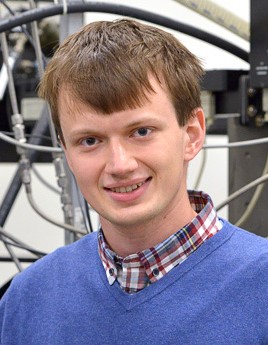
Krzysztof Pyrchla
Simulation Engineer
Gdańsk University of Technology
Krzysztof Jerzy Pyrchla (born 1995) is an alumnus of the Gdansk University of Technology. He graduated Faculty of Applied Physics and Mathematics, receiving an engineering degree. Next, he received his M.Sc Degree at the Faculty of Electronics, Telecommunications and Computer Science. His scientific interest is focused on sensory devices, particularly when the useful signal is deeply buried in the noise. In such cases, mathematical modelling is gaining importance since the noise-signal distinction is highly dependent on the applied modelling. Krzysztof already took part in four research projects financed by NCN and NCBiR. He dealt with the dynamic gravimetry data analysis in his research work, becoming the author of many scripts and programs used for data processing in the GUT. During this work, he uses both classical approaches for time-series filtering in the frequency domain, such as IIR (RC, Butterworth), dedicated for MGS-6 FIR filters and more complex solutions such as adaptive filtering. The results of this work were published in 10.1029/2019EA000983; 10.3390/s19112592; 10.3390/s20216044. In parallel, he is also conducting the simulations research on the phosphorene nanostructures, especially the nanoribbons, as a potential candidate for application in nanomechanical sensing. The work he has carried out so far has focused on using the DFT method (density functional theory) in the LCAO (linear combination of atomic orbitals) approach for the calculation of the strain-stress curve for few-layer black phosphorus nanostructures. He solves this problem by calculating the forces using Hellman–Feynman theorem and its minimalization by applying the L-BFGS method. Currently manages the project "Research on the strain effect for the optoelectronic properties of phosphorene nanostructure with the application of quantum mechanics methods" in the "Diamond Grant" framework. In the QUNNA project, Krzysztof is mainly responsible for ab-initio DFT simulations of nanodiamond defects, their electronic and optical properties and interaction of the defect with the diamond surface states. He also performs force-field molecular dynamics simulations of optimal diamond surface coverage by biological functional groups and its dependence on external conditions such as pH.